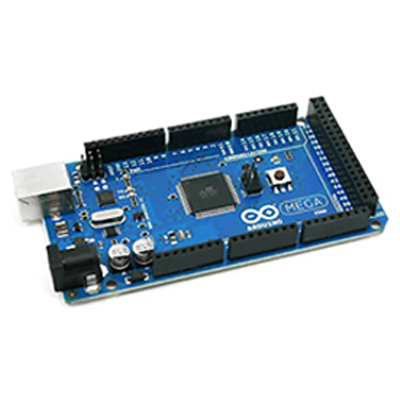Arduino Mega 2560 Board CH340
₹2,000.00 ₹1,250.00
- Microcontroller: ATmega2560
- Operating Voltage: 5V
- Input Voltage (recommended): 7-12V
- Input Voltage (limits): 6-20V
- Digital I/O Pins: 54 (of which 15 provide PWM output)
- Analog Input Pins: 16
- DC Current per I/O Pin: 40 mA
- DC Current for 3.3V Pin: 50 mA
- Flash Memory: 128 KB of which 4 KB used by the boot loader
- SRAM: 8 KB
- EEPROM: 4 KB
- Clock Speed: 16 MHz
Description
Nowadays the electronic devices are becoming compact, flexible, and cheap that are capable of doing more function as compared to their predecessors. A Microcontroller was introduced as a new innovation in the electronics industry. Designed with the purpose of making our tasks easier, with minimum effort, and gives maximum output.
Arduino Mega 2560 is an open-source based on the Microchip ATmega2560 developed by Arduino. cc. The current version of Arduino Mega 2560 is an updated version of Arduino Mega. It 54 digital input/output pins, 16 analogue inputs, 4 UARTs (hardware serial ports), a 16 MHz crystal oscillator, a USB connection, a power jack, an ICSP header, and a reset button. And an Atmega2560 microcontroller is used to connect with external electronics circuits. Out of 54 I/O ports, 15 pins were used for PWM output. Each pin operates at a voltage of 5V providing a maximum of 50mA. It also supports serial communication using Tx and Rx pins. The board consists of all the essential things needed to support the microcontroller.
Mega 2560 is powered either by connecting to a PC via USB cable or battery or an AC-DC adapter, although it operates at voltages between 7V and 20 volts. The Mega 2560 board is compatible with most shields designed for the Uno and the former boards Duemilanove or Diecimila. This board designed with a base plate protects it from unexpected electrical discharge. Moreover, this microcontroller is programmable with the Arduino IDE common to all our boards and supports C programming. The ATmega2560 on the board comes preprogrammed with a bootloader. This eliminates an external burner utilization to burn the program code into the Arduino board. Finally, the communication of the boot loader can be done using an STK500 protocol.








Reviews
There are no reviews yet.